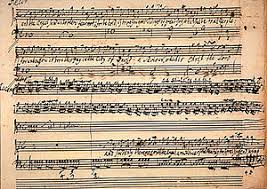This day, in 1742, April 13th, was the first performance of Handel’s Messiah, in Dublin, of all places. Here was an Oratorio, following the life of the Saviour from His birth, through His Passion, to His glorious resurrection, written by a German, who had become a naturalised Brit, with a libretto in English, performed in Ireland. George Frideric Handel wrote the score in 24 days over the summer of 1741 – 259 pages of music originally for 2 trumpets, timpani, 2 oboes, 2 violins, viola, and basso continuo. Handel’s hurried notes show very few corrections, ending with the magnificent Halleluiah chorus, glorifying the triumph of Christ over death. The legend, with the speed of composition, is that the music was divinely inspired, which, in a sense, all true art is.
Hence, the music is as much an Easter, and even Lenten, ode, as it is a Christmas one – even if it has become culturally connected to the celebration of Christ’s birth.
But now may be a fitting time to listen to those parts we normally do not, placing the Easter song of praise where it belongs, with the Saviour triumphing over despair and death.

